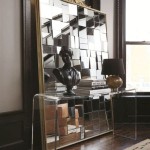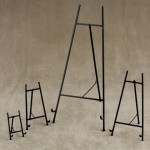How to Tell If a Mirror Is Two-Way Glass
The idea of a two-way mirror, a seemingly ordinary mirror that allows one-way visibility, has captivated the imagination of many. Often associated with intrigue and mystery, the concept is frequently depicted in movies and television shows, leaving some to wonder if they might encounter such a mirror in their own lives. While the existence of two-way mirrors is not a fabrication, they are not as ubiquitous as popular media might suggest. Understanding how these mirrors function and how to identify them can dispel any lingering anxieties about potential hidden observation.
Understanding the Science Behind Two-Way Mirrors
A two-way mirror is more accurately described as a one-way mirror, as its primary function is to allow viewing from one side while obscuring the view from the other. The mechanism behind this phenomenon relies on the principle of light reflectivity. A standard mirror is coated with a highly reflective material, typically silver, which reflects nearly all incident light. In contrast, a two-way mirror utilizes a thinner, less reflective coating, allowing some light to pass through while reflecting the rest. The effectiveness of the mirror depends on the amount of light on each side.
When a brightly lit room is placed behind the mirror, the light reflected from the room is stronger than the light passing through the mirror. This creates the illusion of a regular mirror for the observer in the dimmer room. Conversely, someone in the brightly lit room can see through the mirror into the dimmer room because the light from their side is stronger than the reflected light from the other side.
Visual Inspection Techniques for Identifying Two-Way Mirrors
While accurately identifying a two-way mirror can be challenging without specialized equipment, several visual inspection techniques can help raise suspicion. It's important to note that these methods are not foolproof, and some may require practice to interpret the results accurately.
1. The Reflection Test
Hold your finger close to the mirror's surface. If you can see a gap between your finger and its reflection, it could indicate a two-way mirror. This gap signifies that light is passing through the mirror, which is characteristic of a partially reflective surface. However, this test may not be reliable if the lighting conditions are highly uneven.
2. The Light Test
Shine a strong light, such as a flashlight, from the other side of the mirror. If the light passes through, you can conclude that the mirror is not entirely reflective and could potentially be a two-way mirror. However, this method is only effective in controlled conditions, and a standard mirror may also reflect some light.
3. The Touch Test
Gently touch the mirror's surface. Two-way mirrors often feel slightly different than standard mirrors due to the thinner reflective coating. They may feel less smooth or slightly colder. However, this test is highly subjective and should not be relied upon solely.
4. The Temperature Test
Two-way mirrors can feel slightly colder than standard mirrors due to the thinner coating. This temperature difference may be more noticeable in environments with significant temperature variations. However, this method is unreliable, as other factors, such as room temperature, can influence the perceived temperature.
5. The Peephole Test
If possible, look for a small peephole or camera lens concealed near the mirror's frame. This is a common method for monitoring the room from the other side. If you find a peephole, it is a strong indication of a two-way mirror. However, the absence of a peephole does not necessarily rule out a two-way mirror.
Conclusion
While the concept of two-way mirrors can be exciting, it's essential to remember that they are not ubiquitous and their use is often restricted to specific security or research applications. Remember that visual inspection techniques can be helpful to increase awareness but should not be solely relied upon to confirm the existence of a two-way mirror. If you have concerns about potential surveillance, it is best to consult with a security expert or law enforcement professional.

Mirror Or Two Way Glass Here S How To Tell The Difference Test Hotel Mirrors

How To Detect A Two Way Mirror Fingernail Test

How To Tell If A Mirror Is Two Way Or Not 8 Steps With Pictures

How Mirrors Work And To Test Two Way Glass The Horizon Sun

How To Tell If You Re In A Room Restroom Motel Etc With Mirror Or
How To Tell If A Mirror Is Two Way Or Not Quora

How To Tell If A Mirror Is One Way Glass Boing
Is It Glass Or A Two Way Mirror The Balancing Act

How To Tell If A Mirror Is Two Way Or Not Quora
A Mirror Or 2 Way Glass








